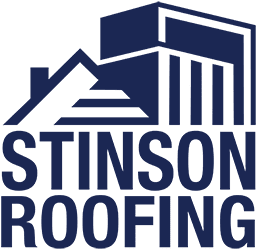The roof is one of the biggest investments you’ll make for your building. The longer it lasts, the better your return on investment. Roofing is tricky and complicated. You shouldn’t place too much weight on it? What’s with that green stuff on your roof? What is good drainage for the roof? These questions will all be answered and explained in our article “7 Tips for Commercial Roofing Maintenance.”
1. The first step in maintaining a healthy roof is to prevent water from collecting. Remove excess debris from the roof. Tree seeds, leaf buds, small sticks, branches and falling tree blooms can damage shingles, cause algae to grow and eventually clog the gutters. This is especially true if there are trees overhanging the roof. You should clean gutters and downspouts to prevent leakage and back-up. It’s important to remember to clear debris from roofline valleys and other build-up areas. It is always surprising how much can collect and cause an overflowing situation during a rainstorm.
2. You need to access the roof for inspections and maintenance. But it’s important to realize that too many people or too much weight on the roof may cause roof strain. You do not want more foot traffic on your roof than is absolutely necessary. When walking on asphalt roofs, the tread of the persons shoe erodes the granules, causing the roof to deteriorate even faster. This deterioration causes warping and leaking of the shingles. Walking on the roof can cause damage to the interior due to leaking. While damage may not be evident at the time, a shingle or tile can tear or loosen. This problem may not present itself until a leak is discovered in the interior of the house.
3. Schedule regular preventive maintenance inspections for your multi-family home. Contractors inspect the roof of your property twice in a year, fall and spring, to prevent minor damages from snowballing into major issues, and help you save money in the future.
4. Plan a moisture survey every 5 years to detect wet insulation or leaks. Leaky roofs cost American businesses billions of dollars annually, with damage ranging from minor water stains and electrical outages to complete structural failure of the roof.
5. Proper irrigation is not only critical for the detection and removal of moss. It also protects your roof membrane from leaks and pooling. Building owners may think moss on roofs is harmless, just a cosmetic problem. Leaving it in place can damage the roof and even have disastrous result. During the moist, cooler months, these spores grow into moss. In drier weather, the moss goes dormant, turning into a rust-colored plant. Once there it acts like a sponge, soaking up and storing rainwater. The wetting of the wood roof sheathing can readily cause mold growth and serious decay. Then the roof loses its structural integrity and can become unsafe. One way to keep a roof free of moss is by installing zinc or copper flashing along the peak. As rain washes down the roof, some of the metal dissolves and kills the moss. You can also apply moss-killing chemicals in liquid, granule or powder form. But if moss is already growing it’s smart to have a professional apply a chemical twice a year.
6. Inspect your roof twice a year and after a severe storm. The objective of performing an annual roof inspection is to determine if the roof is performing according to its intended function, to identify signs of weakness, deterioration or hazard and to identify needed repairs.
7. Check roof to wall connections and examine flashings for wrinkles or tears. If the flashings are falling off or rusted out, they need to be replaced. There may be additional damage to the walls and structures below them. Since improperly installed flashing leaves your home unprotected from rain, wind & hail it is best to have a professional address more extensive flashing problem.


0 Comments